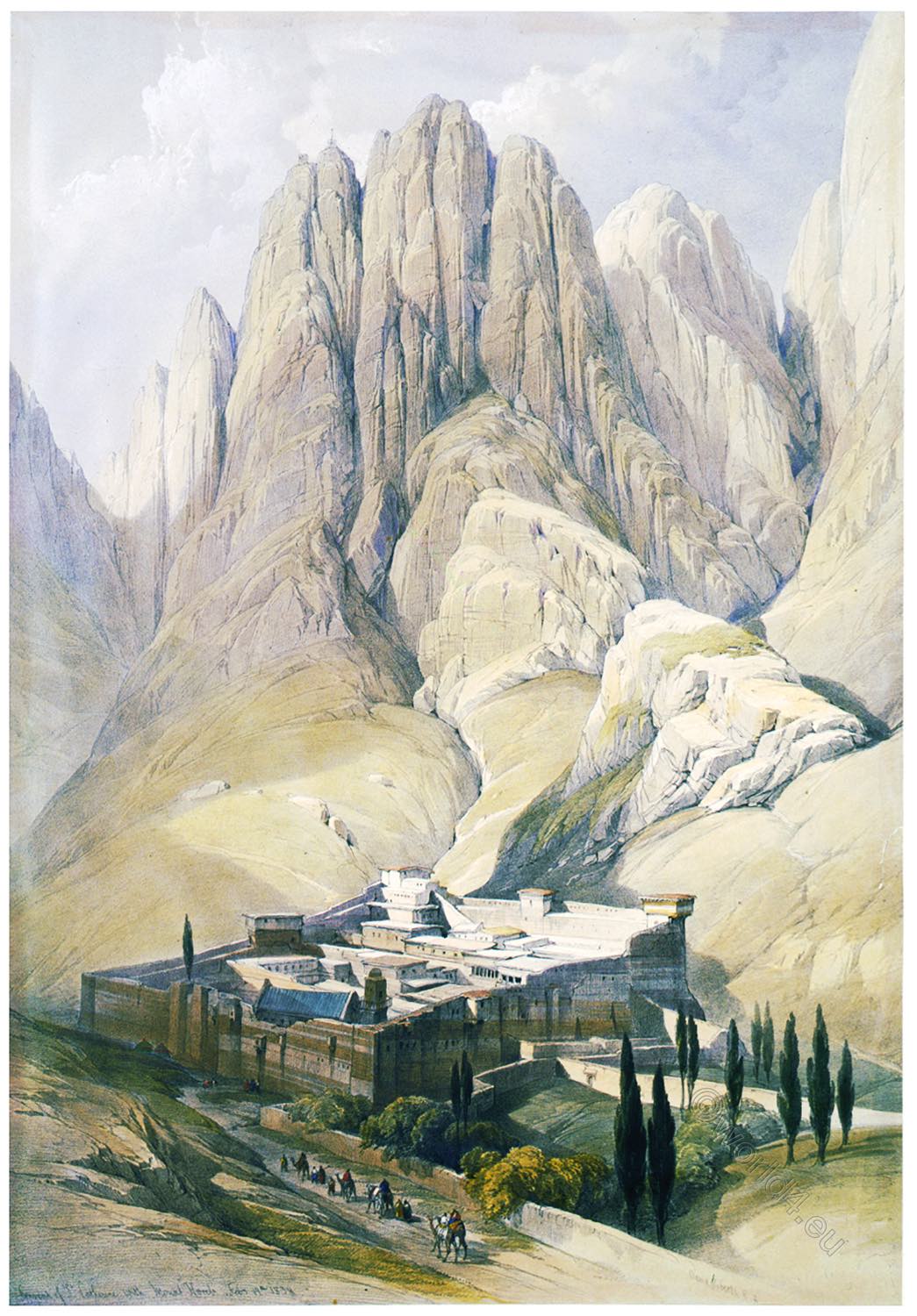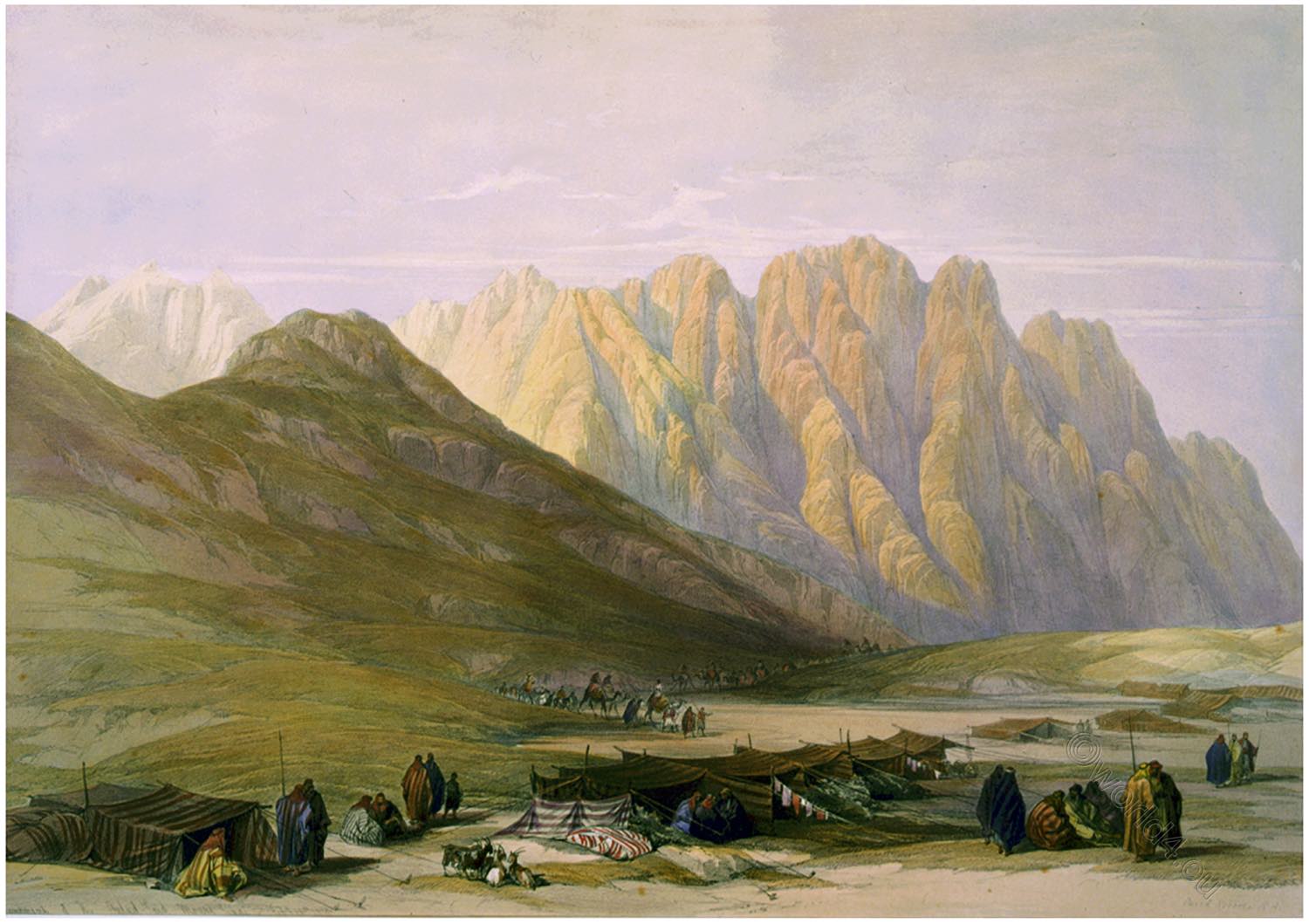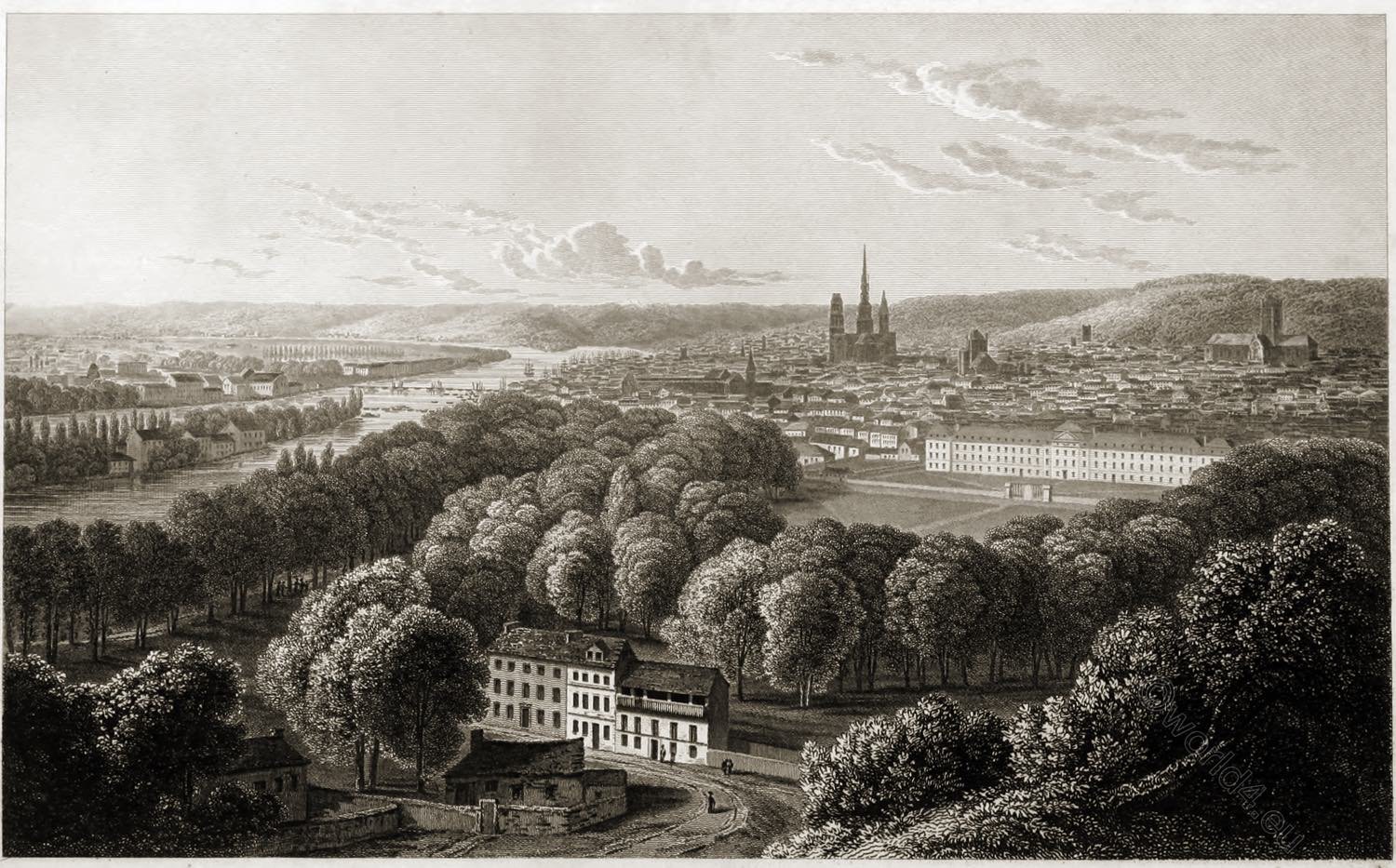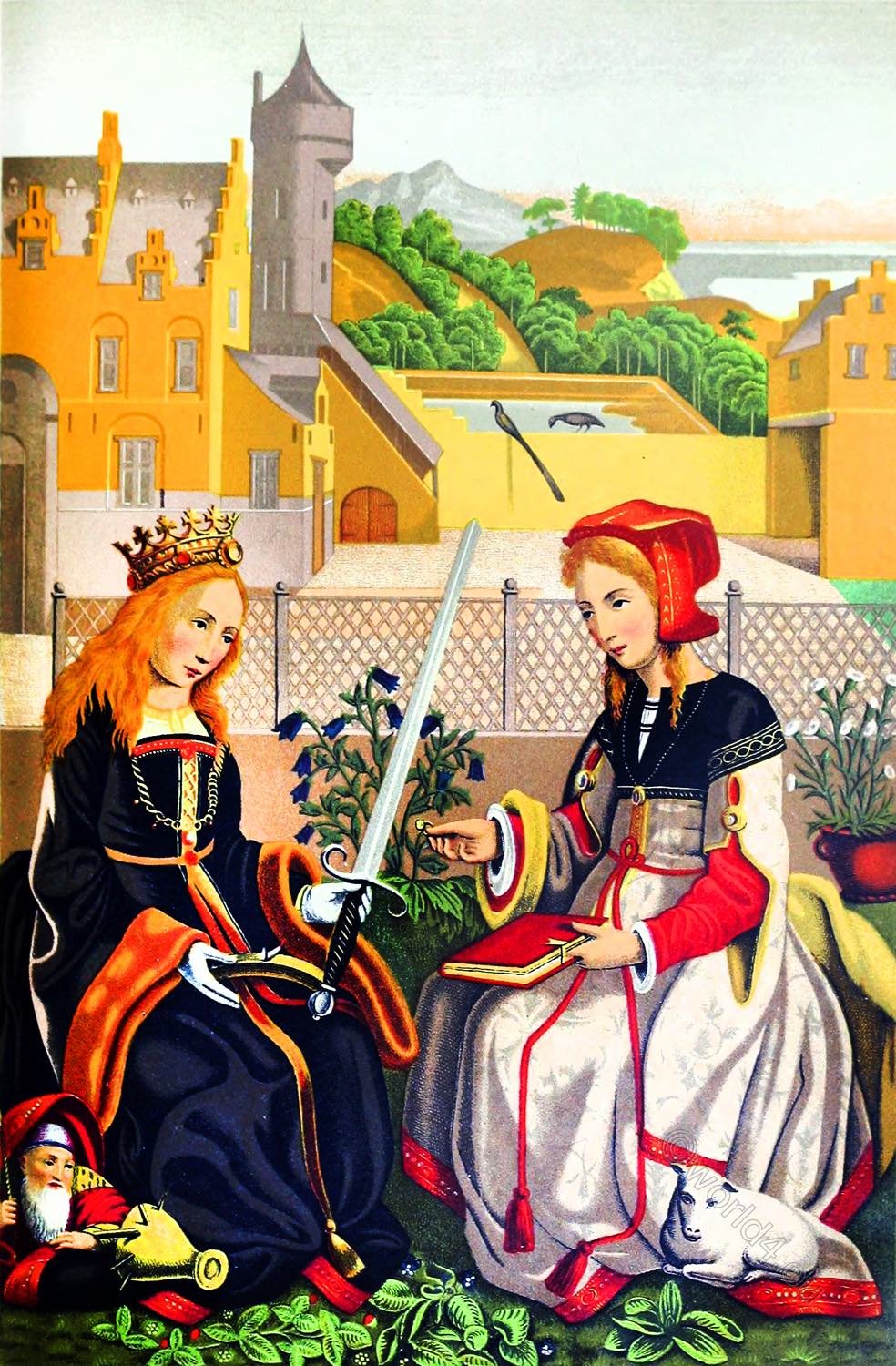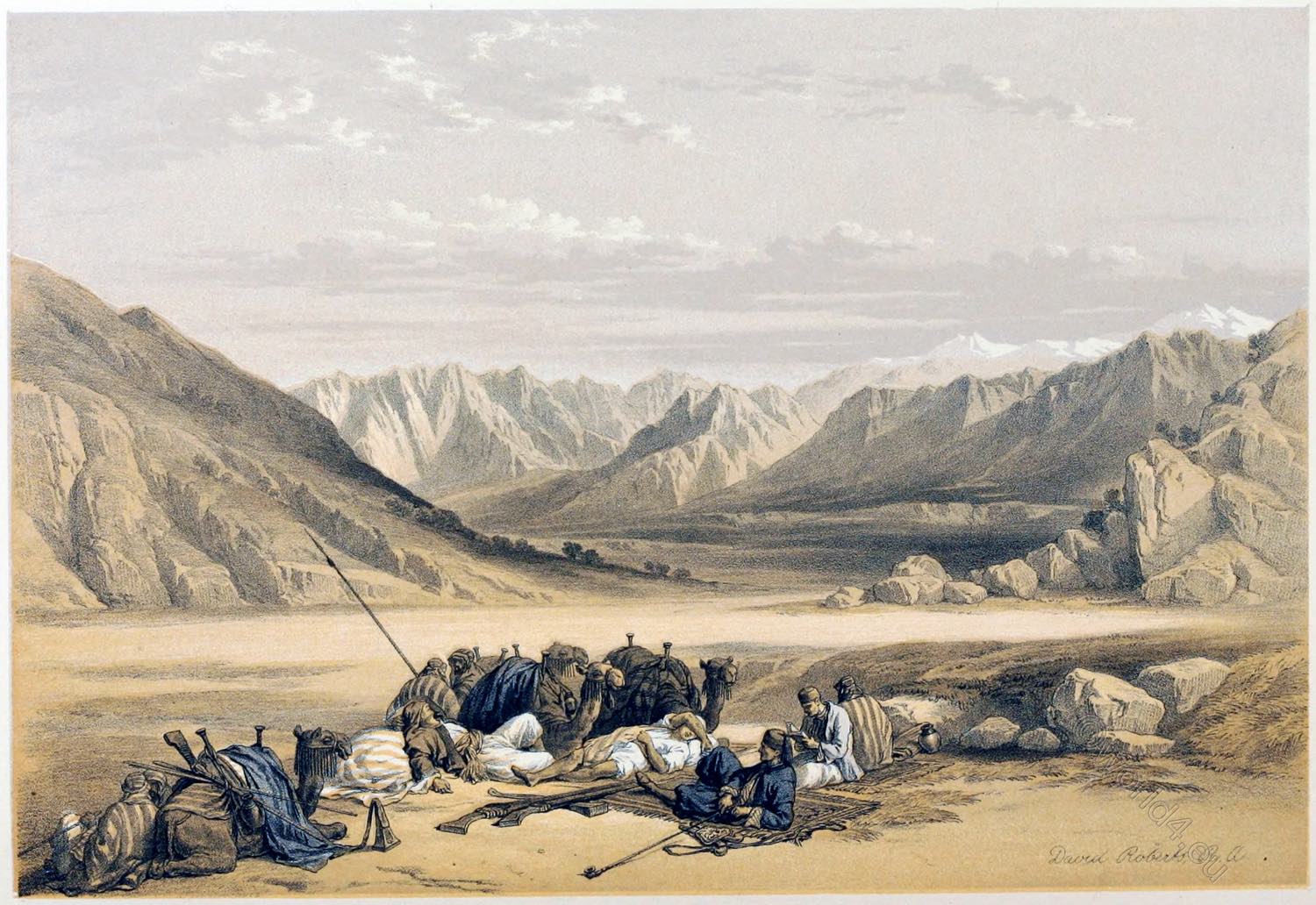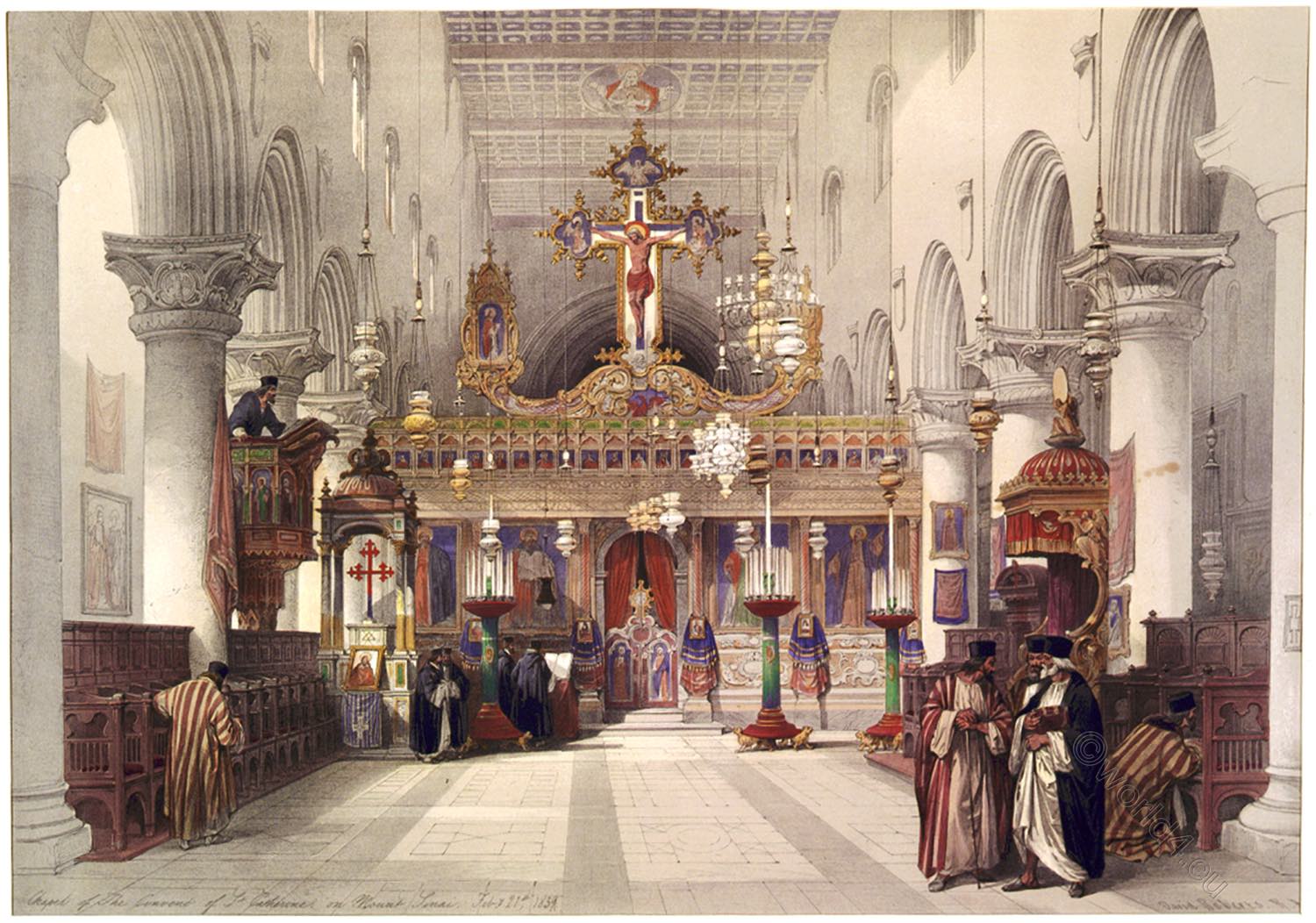
INTERIOR OF THE CHAPEL OF ST. CATHERINE
by David Roberts
“This View,” says the Artist, “represents the interior of probably the oldest and the richest of all the Eastern churches ; its remote and sacred situation, its strength of structure and position, and the deep veneration in which it is held by Mohammedans as well as Christians, have favored its preservation, and secured it in the possession of its riches and relics.
From its foundation in the sixth century, down to our day, it has been protected from plunder, though the country in which it is situated has been invaded by lawless conquerors, and it has always been surrounded by tribes of marauders. Its wealth is very great in all that belongs to its Chapel, which is guarded with much jealousy.
This, probably, was the reason why so many difficulties were thrown in my way when I attempted to make a sketch of the interior of the Chapel. The brotherhood, though kind in the extreme, and though they allowed me to draw in every other part of the Convent, and themselves sat for sketches and studies, yet always found some excuse, whenever I proposed to make a drawing of the Chapel ; they had mislaid the key, or some such frivolous reason. At length, I fairly took out my sketch-book during service; they could not interrupt me while engaged in their sacred duties; and I thus effected my object.”
The present Convent was built in the sixth century by the Emperor Justinian, and some of the enrichments and decorations are of that period. Like other Greek churches, it possesses a rich and gilded screen, and contains pictures of the saints of the Greek calendar.
Moses and Aaron, of course, hold conspicuous places in a spot made sacred by the eventful history of the great Lawgiver. The Screen separates the Altar from the congregation, and conceals the Patriarch from the people when he reads the service to which they respond.
Its separation may be intended to represent that of the Jewish Holy Place. Though the pictures of saints and Scriptural subjects are profuse, there are no images, as in the Latin churches. The floor of the Chapel is beautifully inlaid with variegated marble ; and on the right is seen a magnificent throne for the Patriarch, or Bishop.
The Altar is inlaid with ebony and mother-of-pearl, of the most elaborate and beautiful designs, and is probably, as well as many of the pictures, the work of Byzantine artists. It is covered with costly and ancient votive offerings, most of them enriched with precious stones.
Yet the riches of this Altar sink into insignificance when compared with those of the Chapel behind it, raised on the spot on which it is believed that Moses saw the burning bush.
“Through this sacred place we were hurried, after we had been requested to uncover our feet, ‘for the place whereon thou standest is holy ground.’ We were, therefore, not allowed leisure for the examination of the Altar ; but the walls, and even the roof, were covered with the gifts and offerings of Emperors, Kings, and Princes, from the period of its foundation.
The floor was covered with the richest and most costly Persian carpets. On the left, as we entered, we saw the tomb containing the relics of St. Catherine, which were said to have been transported by angels, after her martyrdom at Alexandria, to the summit of Mount Sinai, whence they were brought down by the Monks to their present resting-place, and where they have ever since been held in the most profound veneration.” 1)
1) Roberts’s Journal.
Source: The Holy Land, Syria, Idumea, Arabia, Egypt, & Nubia, by David Roberts (British, 1796-1864), George Croly, William Brockedon. London: Lithographed, printed and published by Day & Son, lithographers to the Queen. Cate Street, Lincoln’s Inn Fields, 1855.
Continuing
Discover more from World4 Costume Culture History
Subscribe to get the latest posts sent to your email.

